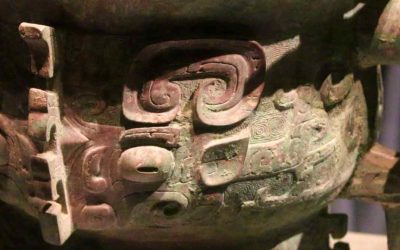The Dong are one of the minorities of China with a large population. According to the census of the year 2000 their population was 3,000,000 people.
They live mainly in Guizhou Province (approximately 1,800,000 people), along a fringe of flat lands that cross the province from north to south. There is also a big Dong population in the southern part of neighboring Hunan Province (about 900,000), and more than 200,000 persons in Guangxi Zhuang Autonomous Region, and a few thousand in Hubei Province (Enshi Prefecture).
The Dong, as do most of the peoples related to them, live near the rivers or in hills generally not of great height. They mainly cultivate rice. They raise domestic animals, especially hens and pigs. The exploitation of the forests, which holds a special spiritual relationship with the Dong, is an activity of economic importance.
They refer to themselves as «Kam.»
It is generally considered that there are two quite different types of Dong, the Dong of the North and the Dong of the South.
There are important linguistic and cultural differences between them. In general those of the north have received more influences from mainstream Chinese culture, while those of the south better conserve the Dong traditions. The typical monuments of the Dong, such as Drum Towers, Bridges of Rain and Wind, and the Temples of the Goddess Mother Sama, are all characteristic of the Dong of the South.
Their language belongs to the Sino-Tibetan family, Dong Dai branch, Zhuang Dong sub-branch. It has two main dialects, understandably called the northern and southern dialects, whose speakers cannot understand each other easily. Each one of these dialects has in turn three clearly differentiated local sub-dialects.
After 1958 an alphabet was invented for their language, but it has not been widely used. Before 1958, they used Chinese characters adapted to their own language.
More posts on China ethnic groups
Algunos libros sobre filosofía y pensamiento chino
Algunos libros sobre filosofía y pensamiento chino Son solo obras leídas en los últimos años, desde que empecé a realizar pequeños resúmenes para mí mismo. Si tienes algo que añadir no dudes en ponerte en contacto. Cleary, Thomas.- I Ching: el libro del cambio. Edad....
Notas sobre algunas novelas modernas de China
Notas sobre algunas novelas modernas de China Ai Mi. Amor bajo el espino blanco. Suma. 2012. En medio de la gran locura, de esa locura primordial, decenas de personajes desfilan por la obra, cada uno con su carga ambigua de humanidad. A lo largo de las páginas de la...
Algunos libros y estudios sobre la mitología china
Algunos libros y estudios sobre mitología china Son solo obras leídas en los últimos años, desde que empecé a realizar pequeños resúmenes para mí mismo. Si tienes algo que añadir no dudes en ponerte en contacto. Birrell, Anne.- Mitos chinos. Akal. 80 pgs El breve...
Algunos libros y estudios sobre poesía y literatura china
Algunos libros y estudios sobre poesía y literatura china Son solo obras leídas en los últimos años, desde que empecé a realizar pequeños resúmenes para mí mismo. Si tienes algo que añadir no dudes en ponerte en contacto. Aguas muertas.- Wen Yidou (Introducción, notas...
Los dioses están borrachos. Enfoques comparativos de la religión china.
Los dioses están borrachos. Enfoques comparativos de la religión china. Este es un libro completamente original sobre las religiones de China. En vez de seguir el repetido mantra de la existencia de tres religiones y describirlas con mayor o menor acierto, que como el...
La posesión por los espíritus en la antigua China
La posesión por los espíritus en la antigua China Acabo de terminar de leer Los antepasados están borrachos, un libro de Jordan Paper . Tal vez uno de los mejores libros sobre la religión en China que se pueden encontrar, pues con cada uno de sus capítulos, casi con...







